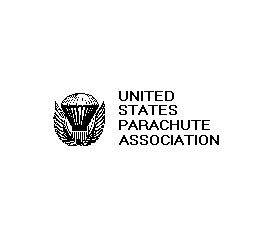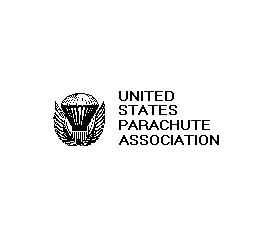Jumping with Weights
This article applies to FS belly flying, not Freefly or Canopy piloting.
Safety first
Wingload: Before considering jumping with weights please consider if you are comfortable with the higher wingload of your canopy. You will fly faster with the weights and if you are already pushing your limits then it may be unsafe or unnecessarily stressful. When choosing your canopies it may be a good idea to choose one size larger to allow for wearing weights.
Water landings: You cannot swim with weights on! So please consider this if you are jumping near water. A weight belt is a clear advantage in case you have to dump the weights to allow you to swim. A tight jumpsuit and a weight vest are not good when landing in water, you cannot swim with the vest and it is nearly impossible to get off in the water.
Health: Please consider if your body can handle the extra stress of jumping with the weights. If you have a bad back, a hard opening while wearing a heavy weight belt could be really bad for you!
Comfort: Not exactly a safety aspect but weights can be really uncomfortable.
Safety of others: Please make sure your weighs are firmly attached to your body. Losing or deliberately dropping weights can kill people on the ground, destroy houses and sink boats!
Then why would anyone choose to jump with weights?
Considering the safety and comfort issues why would anyone consider jumping with weights? Because it makes you a much better FS skydiver! Unless of course you naturally fall fast. When you see top performing skydivers, you will see that more than half of them wear weights. They do it because it is a clear performance advantage.
Weights is a personal thing
Just like your body shape and flying style are unique, so is your need for weights. The big or dense people don't need weights at all, and could do the rest of us a favor by choosing a jumpsuit that will slow them down. Smaller or skinny people often need weights, but the amount varies significantly.
Definitions
Just to make sure everyone is one the same page, two definitions;
The Ideal fall rate is your fall rate when you are in freefall alone in a neutral comfortable body position without trying to go either fast or slow. (Mine is 187 km/h - 116 MPH)
The Fall rate range is the range of speeds at which you are able to fall when trying to go faster or slower. (Mine is 160 - 220 km/h or 99 - 137 MPH).
The purpose of weights
The purpose of jumping with weights is to increase your Ideal fall rate and shift your Fall rate range upwards. In other words, to make it easier to fall faster and keep up with your team.
The fall rate range of most skydivers is +- 30 km/h (+-20 MPH) from the ideal fall rate. The heaviest weights people are comfortable jumping with will give an increase in ideal fall rate of 20 km/h. The body is therefore much stronger at controlling the fall rate than by wearing weights.
What a lot of people don't understand is that the weights will not actually make you fall faster! With the weights you will fall at the rate of the team, and without the weights you will fall at the rate of the team, you will just struggle more to do it! This of course assumes that you have a reasonable range, if you don't then you should work on improving it.
Avoiding struggling to maintain a higher than ideal fall rate is the real propose of jumping with weights. What happens is that it requires attention to fall faster than the ideal fall rate, attention unnoticed taken away from flying your slot, turning points etc. Less attention on what you are supposed to do will make you perform at less than your potential.
Wearing the right amount of weight, so you don't need attention on falling fast, will free your mind to be a better skydiver. With the right amount of weight you will notice that you are stronger, can move and turn faster, be more aware of what is going on around you, and you will make fewer mistakes and brainlocks.
How to know if you need more weight
If you need much more weight (5+ kg) then it is easy to feel because you are struggling a lot to fall fast, or you may not be able to keep up with your team. If you don't need that much then it is very likely you will not notice you are struggling. Things to look for indicating you (or others) need more weight;
1. You pop up a little during challenging moves or if unexpected things happen
2. You feel unable to move as fast as you normally can
3. You feel slightly unstable
4. You fly with your hands above your head
Video of your jumps can be great for seeing these things since you may not notice during the jump.
How much do I need?
How much weight you need for a given jump is surprisingly complicated! Obviously, it depends on your ideal fall rate and the fall rate of the team you will be jumping with. For the first jump with a team it is a guess, and then you adjust the amount of weight to match your ideal fall rate to that of the team. It may take several jumps to get it right.
As I wrote earlier the body is much stronger than the weights at controlling the fall rate, so don't be afraid of taking more weight, it takes a lot before it makes a real difference. Actually, I doubt anyone will be able to feel any difference if 1 kg (2 pounds) is added.
How fast will it make me fall?
Assuming everything remains the same, then adding 1 kg will increase your ideal fall rate by 1 km/h (1 pound gives 0.3 MPH). This is true for all but the most extreme body shapes.
However, everything does not remain the same! The weight will change but so will the balance and the forces on the body. If your body is very flexible then a weight belt will pull your hip down and effectively make you arch more and thus make you fall even faster. There are several other smaller effects that also change the fall rate, so it is quite complicated and not possible to calculate exactly how much weight you need.
A rough guide is;
Inflexible body: 1 km/h per kg added (0.3 MPH per pound added)
Very flexible body: up to 2 km/h per kg added (0.6 MPH per pound added)
Please be conservative when adding weight and keep you increments at maximum 2 kg (4 pounds). Never make big changes in the amount of weight, the result may surprise you!
Seeking advice
When you are in doubt about how much weight you need (and you will be in doubt), seek advice from an experienced FS skydiver with a body shape, size and weight similar to you. Don't ask the big guys who have never jumped with weights, they may be highly experienced skydivers but they haven't got a clue about your needs. Often they will give useless advice like "You just need to arch more!" or my favorite "Take off your booties!”.
Have fun, improve on every skydive and be safe!
Jacques Jonsman is an engineer, serial entrepreneur and product & business innovator. He is an FS instructor and has been skydiving for 21 years.









